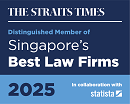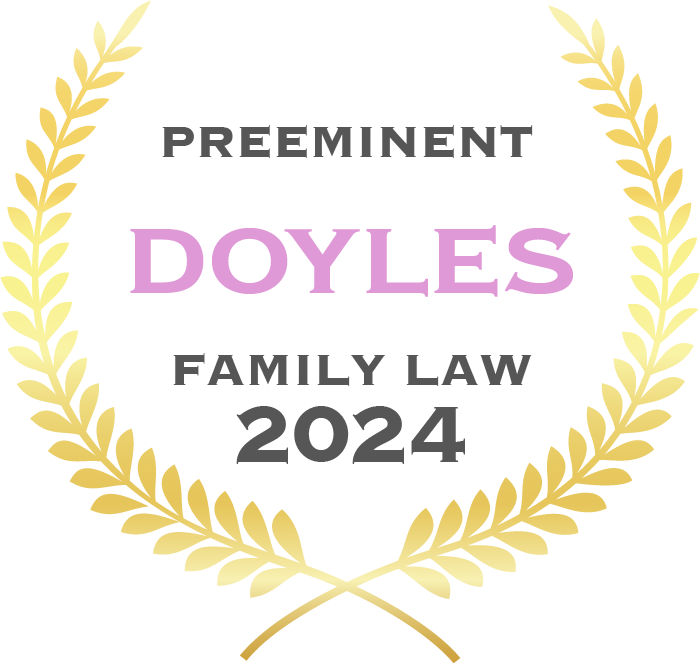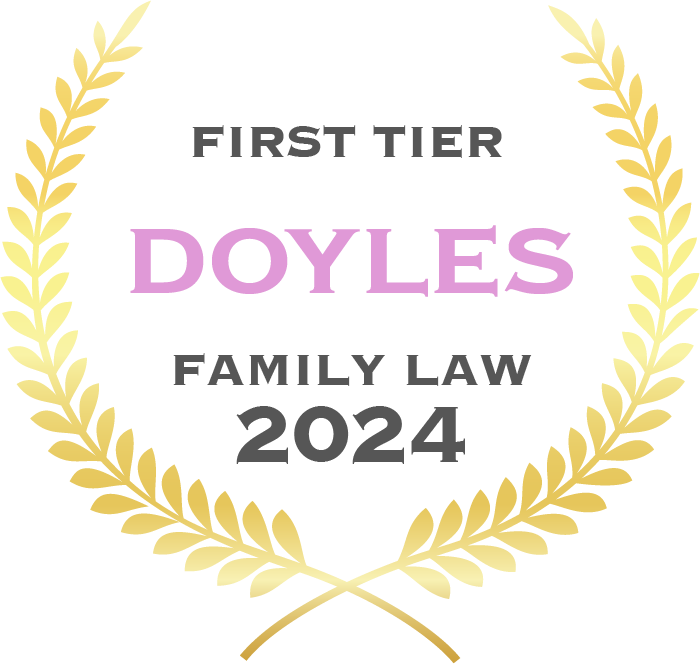Chee Yoh Chuang and another v Ooi Chhooi Ngoh [2020] SGHC 35
Introduction
1. In the recent decision of Chee Yoh Chuang v Ooi Chhooi Ngoh [2020] SGHC 35, the Singapore High Court was called upon for the first time to exercise its powers of sale in relation to co-owned property under the Supreme Court of Judicature Act (Cap 322, 2007 Rev Ed) (“SCJA”) upon the application of the Official Assignee (“OA”) or a trustee in bankruptcy as opposed to a fellow co-owner of the property.
2. In coming to its decision, the Singapore High Court looked into the considerations that a court should take into account when deciding whether to order the sale of a co-owned family home, and how the balance should be struck between the interests of the creditors of a bankrupt and the interests of the bankrupt’s family members who stand to be evicted should the sale of the family home be ordered.
3. The decision is currently the subject of an appeal by the co-owner of the property and we will issue a further update if and when the Singapore Court of Appeal publishes its decision.
4. This decision also follows from an earlier unrelated decision in BYX v BYY [2019] SGHC 237 (“BYX v BYY”) on the where the Singapore High Court had ordered the Sheriff’s sale of an immovable property subject to a Writ of Seizure and Sale without the mortgagee’s consent and expounded on the considerations of the Court. Our update on the case of BYX v BYY can be viewed at this link.
Facts
5. The Property in issue was originally owned by the Bankrupt and his wife (the “Wife”) as joint tenants. Upon the making of the Bankruptcy Order on 4 August 2016, the OA was appointed trustee of the Bankrupt’s estate and the Bankrupt’s interest in the property vested automatically in the OA by virtue of s 76(1)(a)(i) of the Bankruptcy Act (Cap 20, 2009 Rev Ed) (“Bankruptcy Act”). This in turn severed the joint tenancy by operation of law, and the OA and the Wife each took a half share in the Property as tenants in common. Subsequently, two Private Trustees in Bankruptcy (“PTIBs”) were appointed in place of the OA, and accordingly the PTIBs owned the half share in the Property by virtue of s 36(2) of the Bankruptcy Act.
6. The Property was stated to be worth approximately $5.7 million by the Bankrupt in his Statement of Affairs in 2016, and since 2018, the OA and the PTIBs had contacted the Bankrupt and/or the Wife on various occasions to provide the Bankrupt with options to discharge his debts, namely by (1) selling the Property, (2) getting one or more of the Bankrupt’s family members to buy over his half share in the Property, or (3) by settling his debts in full.
7. As the Wife and the Bankrupt refused to take up any of the three options, the PTIBs filed an application to Court in 2019 for the sale of the Property. The Court ordered that the Property be sold in the open market and the sale proceeds, after deducting the expenses connected with the sale and the repayment of the outstanding mortgage, be remitted to the Bankrupt and the Wife in equal shares. However, the Wife was dissatisfied with the decision and has filed an appeal against the decision of the Court.
Decision of the Singapore High Court
Power of the Court to order a sale
8. As a preliminary point, the Court noted that its power of sale is derived from s 18(2) of the SCJA, which provides that the High Court shall have the powers set out in the First Schedule. Paragraph 2 of the First Schedule reads as follows:
Partition and sale in lieu of partition
2. Power to partition land and to direct a sale instead of partition in any action for partition of land; and in any cause or matter relating to land, where it appears necessary or expedient, to order the land or any part of it to be sold, and to give all necessary and consequential directions.
9. The Court further noted that for the purposes of invoking the power of sale, there was no difference between an application by a non-bankrupt co-owner and that by the OA or trustees in bankruptcy who represent the interests of a bankrupt co-owner’s creditors. It is clear that the OA and trustees in bankruptcy are empowered to sell a bankrupt’s property and to institute legal proceedings of the same under the relevant provisions of the Bankruptcy Act.
Considerations in whether to order a sale
10. Moving on to the considerations in whether to order a sale of the Property, the Court stated, as a general rule, that all the relevant facts and circumstances of the case should be considered, followed by a balancing exercise. Some factors to be taken into account in the balancing exercise (which are not exhaustive) may include the following:
- Whether the expected share of sale proceeds would be sufficient to discharge the debts owed by the bankrupt to his creditors;
- Whether the co-owner resisting the sale has contributed, benefited or is in any way related to the events that led to the bankruptcy;
- The potential prejudice that the co-owner(s) and any third parties might face in each of the possible scenarios, namely, if a sale is granted and if it is not granted. An example of such prejudice to the co-owner(s) could include their inability to find feasible alternative accommodation once a sale is ordered due to the low price their property might fetch;
- The potential prejudice that creditors might face in each of the two abovementioned scenarios;
- Whether there is sufficient time and opportunity given to source for alternative accommodation; and
- If the property is being used as a family home, any exceptional and irremediable hardship to the family should also be considered.
Prejudice to co-owner and other third parties
11. The Court noted that in this case, prejudice to the Bankrupt’s family members would be minimal and would have been ameliorated in part by the long period of time since the making of the Bankruptcy Order. In particular, the Court observed that:
- More than 3 years have passed since the making of the Bankruptcy Order, and the family had been given ample time to make alternative accommodation arrangements;
- The expected sale proceeds of the Property would be more than sufficient to purchase alternative accommodation to house the family. While the new accommodation might not be as spacious, similarly located or as luxurious as the Property, downsizing to pay off creditors is not an unexpected consequence that bankrupts and their family members may face;
- Sentimental attachment to the Property, such as having lived there for 40 years and intending to leave it for the children was not a sufficient reason to forestall a sale;
- The Wife’s objection to the sale was due “more a matter of money than of principle”, as evidence showed that the Wife had considered selling the Property if the selling price was too good to be refused.
12. On this note, the Court acknowledged that if only a short amount of time, for example, a time period of less than a year had elapsed between the making of the Bankruptcy Order and the application to court to exercise its power of sale, the Court may be prepared to delay the sale of the Property.
13. This is to allow the family members affected to make reasonable and orderly arrangements to sort out their affairs so as to minimise the inevitable hardship and distress that come with losing their home. However, the Court warned that this is not be taken as a license for a trustee in bankruptcy or the OA to be unnecessarily tardy in making an application for the sale of a bankrupt’s home. In fact, undue delay, particularly when the bankrupt’s family does not object to a sale by the trustee in bankruptcy or the OA, would also cause hardship to the bankrupt’s family as they would have to live under a prolonged state of uncertainty as to whether they would be evicted from their homes.
Prejudice suffered by unsecured creditor
14. In considering the interests of the creditors, the Court found that there would be substantial prejudice to the unsecured creditor in this case, as failure to order a sale of the Property would mean that the unsecured creditor will never be able to reclaim the amount owed to it together with any accrued interest. The resultant effect would be to allow the Bankrupt to evade his entire debt obligation. This is substantial prejudice that is incapable of remedy by any alternative means.
15. After considering the mutually exclusive interests of the creditors and the Bankrupt’s family members who would be affected by the sale of the Property, the Court found that failing to order a sale of the Property would be more prejudicial to the unsecured creditor and accordingly ordered for the Property to be sold.
Concluding Remarks
16. This is an important case providing guidance and clarification on the process where a sale of a Bankrupt’s property is concerned, and would be of particular interest to:
- Creditors of a bankrupt;
- OA and trustees in bankruptcy; and
- Family members living in a bankrupt’s property that is potentially subject to a sale.
17. For creditors, there is now certainty that a court’s power of sale can be ordered in respect of a bankrupt’s property upon the application of the OA and/or trustees in bankruptcy in appropriate cases. The court recognises creditors’ rights to be paid and this provides assurance for creditors to the extent that the Court has provided clarity on the circumstances in which a sale of the bankrupt’s property co-owned with someone else may be ordered.
18. For OA and trustees in bankruptcy, this case provides guidance as to when such an application should be taken out. OA and trustees in bankruptcy should note that that there is a fine line between giving the affected family members of a bankrupt sufficient time to make arrangements to sort of their affairs and taking an extended period of time to bring such applications, especially where family members do not object to the sale of the property, which may cause hardship to the bankrupt’s family as they would have to live under a prolonged state of uncertainty as to whether they would be evicted from their homes.
19. As for family members of a bankrupt who may be at risk of losing their homes, this is unfortunately one of the common consequences that may follow once a Bankruptcy Order has been made. Nonetheless, the court empathises and allows a reasonable time for family members to make arrangements and sort out their affairs, so that any hardship and distress which they may face can be kept to a minimum. The conclusion which can be drawn from this decision is that generally a reasonable time allowed would be within 1 to 3 years after the making of the Bankruptcy Order. This provides some guidance to affected family members as to the timeframe and allows them to mentally prepare themselves for the sale of the property they live in.
NOTE: The content of this article is for general information only and does not constitute any form of legal advice. Please seek specific legal advice regarding your specific circumstances.
Eversheds Harry Elias – Asset Recovery
Eversheds Harry Elias’ Restructuring & Insolvency practice has extensive experience acting in the recovery of debts and assets for our major clients, which include banks and other financial institutions, MNCs, listed corporations, major commercial landlords, property developers as well as numerous management corporations of strata titled developments to recover outstanding maintenance and sinking fund contributions.
Our lawyers also have extensive experience in enforcing Singapore Court Orders, Foreign Judgments and Arbitration Awards through legal proceedings such as writ of distress, writ of possession, garnishee, bankruptcy / winding up, examination of judgment debtor and writ of seizure and sale of movable (e.g. goods, equipment and shares) and immovable properties.
Together with Eversheds Sutherland, which is one of the largest global full-service law firms, with 69 offices in 34 countries, our global practice covers key jurisdictions across the world and includes many lawyers listed in leading legal directories including Chambers, Legal 500, Asialaw Profiles and Benchmark Litigation.
We are therefore well placed to advise and support our clients in asset recovery matters.
For further information, contact:
Justin Chia
Head, Restructuring & Insolvency
Partner, Eversheds Harry Elias
JustinChia@eversheds-harryelias.com
+65 6361 9814
Chua Jian Zhi
Senior Associate, Eversheds Harry Elias
Jianzhi@eversheds-harryelias.com
+65 6361 9814
Charles Ho
Senior Associate, Eversheds Harry Elias
CharlesHo@eversheds-harryelias.com
+65 6361 9316
Flora Koh
Associate, Eversheds Harry Elias
FloraKoh@eversheds-harryelias.com
+65 6361 9316







